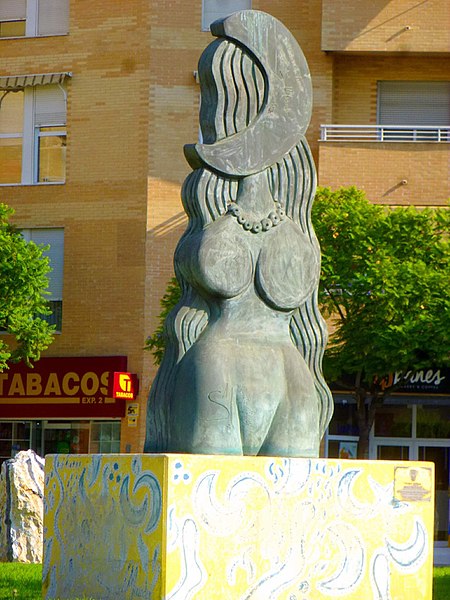Dona Lluna

Dona Lluna: A Tribute to Womankind is a sculpture by Saülo Mercader, standing in the middle of a rotunda, in the heart of the City of Sant Vicent del Raspeig, the home of Alicante University, in Southeastern Spain. It was unveiled on March 11, 2007 by local dignitaries and a symphony orchestra from Madrid. The sculpture, representing the shape of a powerful and massive female body, weighs 2 tons and is 4 metres high. The sculpture is surrounded by twelve painted stones ( 2 metres high) forming a lunar calendar. It is inspired by Saülo Mercader's birth in 1944, in a mansion called Los Molinos in the city of San Vicente del Raspeig where he lived for the first five years of his childhood. Dona Lluna is a Valencian name which means Moon Lady. It is engraved with the statement, "Aquí nací, aquí doy" ("I was born here, I give–her this work of art–here").
Excerpt from the Wikipedia article Dona Lluna (License: CC BY-SA 3.0, Authors, Images).Dona Lluna
calle Villafranqueza,
Geographical coordinates (GPS) Address Nearby Places Show on map
Geographical coordinates (GPS)
| Latitude | Longitude |
|---|---|
| N 38.394177 ° | E -0.51485 ° |
Address
Videoclub Lo Torrent
calle Villafranqueza
03690 , El Pilar
Valencian Community, Spain
Open on Google Maps






